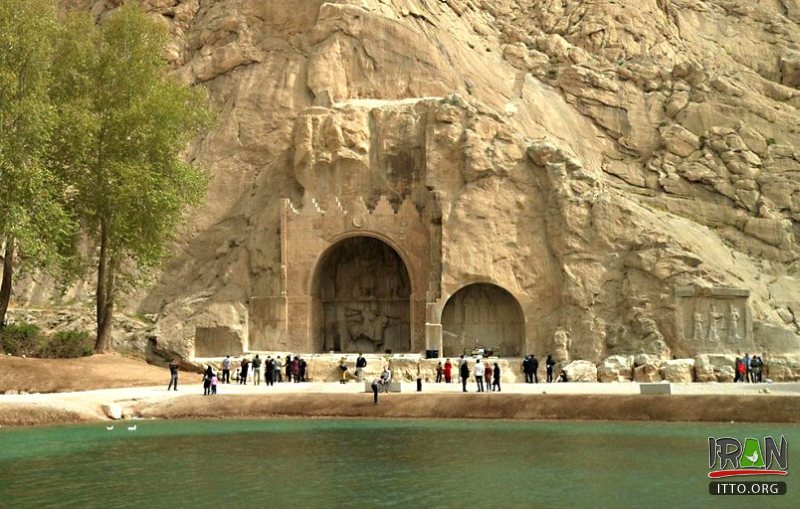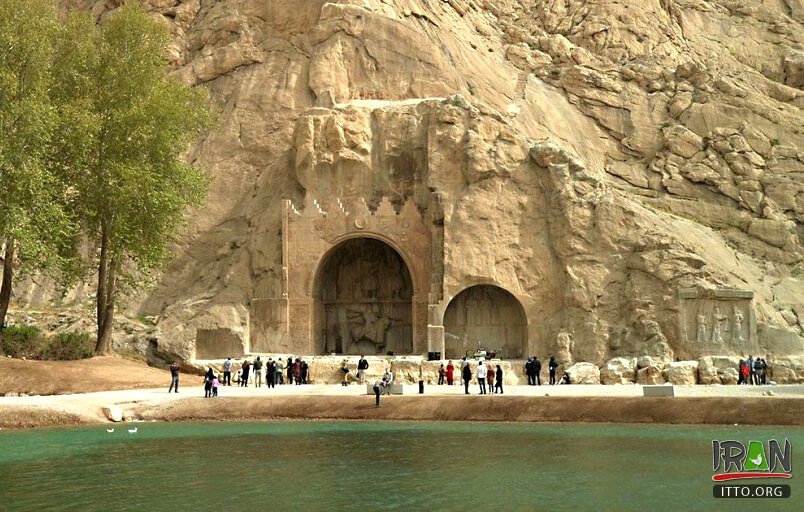The western Iranian province embraces a variety of awe-inspiring historical sites including Bisotun and Taq-e Bostan, both on the UNESCO World Heritage list.
“A total of 313,264 travelers visited Kermanshah’s five [major] historical sites of Taq-e Bostan, Bisotun, Temple of Anahita, Tekyeh Moaven al-molk, Tekyeh Moaven al-molk, and Tekyeh Biglarbeygi during the first four months of the year,” provincial tourism chief Omid Qaderi said on Thursday, Iran Tourism reported.
Kermanshah welcomed 5,664 foreign travelers during the four-month period, the official said, adding “We should turn Kermanshah into a main tourism destination for inbound tours.”
Attracting 177,308 people, the historical and cultural ensemble of Taq-e Bostan received topmost number of visitors while UNESCO-tagged Bisotun was ranked the second, drawing 100,162 visitors, Qaderi said.
Inscribed into the base of a towering cliff, Taq-e Bostan comprises extraordinary Sassanian bas-reliefs of ancient victorious kings divide opinions. Late afternoon is the best time to visit, as the cliff turns a brilliant orange in the setting sun, which then dies poetically on the far side of the duck pond.
UNESCO has it that Bisotun bears an outstanding testimony to the important interchange of human values on the development of monumental art and writing, reflecting ancient traditions in monumental bas-reliefs.
Bisotun is a patchwork of immense yet impressive life-size carvings depicting the king Darius I and several other figures. It was the first cuneiform writing that was deciphered in the 19th century.
Measuring about 15 meters high and 25 meters wide, the inscription was created on the order of King Darius I in 521 BC. It bears three different cuneiform script languages: Old Persian, Elamite, and Babylonian.



